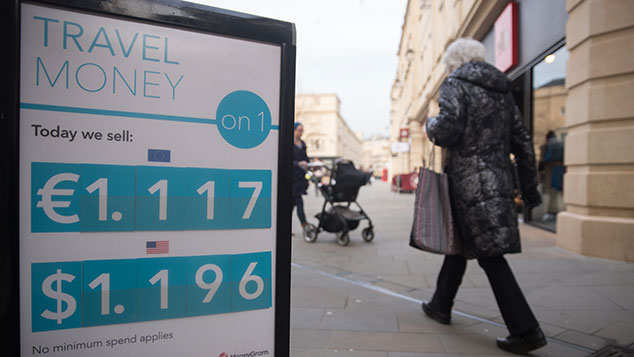
Yesterday, the pound hit its highest level against the dollar since the Brexit vote, rallying to more than $1.38.
On a day when a big government contractor like Carillion went bust, that might seem a mildly surprising vote of confidence.
But it wasn’t mostly about the pound. Both the euro and the yen surged against the dollar yesterday too.
So what’s ailing the US currency?
Why is the dollar getting weaker?
The main driver behind US dollar weakness is the sense that both Europe and Japan are going to start “tapering” their quantitative easing (QE) efforts. This, in turn, is a result of both regions picking up economically.
The Bank of Japan has committed to keeping the ten-year Japanese government bond (JGB) yield capped at 0%. When it promised to do that back in September 2016, it didn’t seem like a big deal, because at the time, the yield on the ten-year JGB was in fact negative. However, now it’s getting trickier to pull off.
The thing about pegs is that, by and large, they are made to be broken. The Japanese economy is improving. Japanese asset markets are doing well. There’s even some signs of inflation picking up. The market won’t ignore that forever. It will keep pushing at the Bank of Japan’s (BoJ) line in the sand, and eventually the Bank will stop defending it.
There are many good reasons to do that, and one of them is to keep the banking sector healthy. Pantheon Macroeconomics makes an interesting point. One result of keeping interest rates ultra-low is that savers see no point in locking up their money in long-term savings accounts (because they earn no more interest than an on-demand, or current account).
Overall, that makes banks’ balance sheets riskier, because they are holding more money that can be withdrawn without notice. That’s something that the BoJ will want to avoid, which is why Pantheon thinks that policy will be tightened faster than the market expects – despite BoJ denials.
Meanwhile, the European Central Bank (ECB) is making increasingly hawkish noises. Mario Draghi has always had a job on his hands holding back the more aggressive members, and with the German economy booming, it’s only getting harder. Some are now arguing for eurozone QE to end as early as September.
Money is returning home from the US
This all suggests a couple of things about the future. Money which had fled Europe in recent years and which had never really been interested in sitting in Japanese assets, is now returning to those markets.
Indeed, Crossborder Capital reckons that around $3trn “is potentially capable of leaving the “safety” of US assets and returning back to Europe and Asia”. That – combined with the Federal Reserve rowing back from QE – is likely to be negative for bonds.
After all, if the Fed stops buying US Treasuries, and the ECB and BoJ stop printing as much money (which has been chasing Treasuries higher too), then what’s to stop yields from rising?
And note that this – in the first instance – wouldn’t necessarily be a bad thing. A flat yield curve (where long-term interest rates are barely higher than short-term ones) is not a good sign, and nor is it good for the financial sector. A rising one is an indicator of economic strength.
Meanwhile, the money flowing back into these regions because of rising optimism, is likely to go into riskier assets such as equities, rather than pile into their own country’s bonds. In other words, it points to rising interest rates everywhere.
As long as that rise is relatively slow, then it needn’t cause too many problems immediately. And there’s still a lot of scepticism about growth and inflation. Enough to keep bond investors from panicking for now, you would think.
You would also expect paranoid central bankers from outside the eurozone (which is a special case, because it’s the only central bank with any sort of “hard” currency advocates wielding any power) to continue to speak softly when it comes to inflation and rising rates. In the US in particular, I’d expect the Fed to continue to err on the side of surprising markets on the dovish side.
So stick with your bets on both European and Japanese equities. Rising asset prices combined with strengthening currencies are nice things to be exposed to. The weaker US dollar is also good news for the precious metals and commodities in general.
But keep an eye on bond yields. When the party’s over – or coming to a pause – that’ll probably be where the signal comes from.